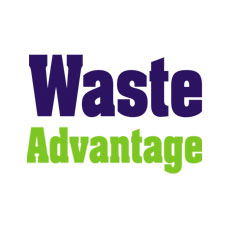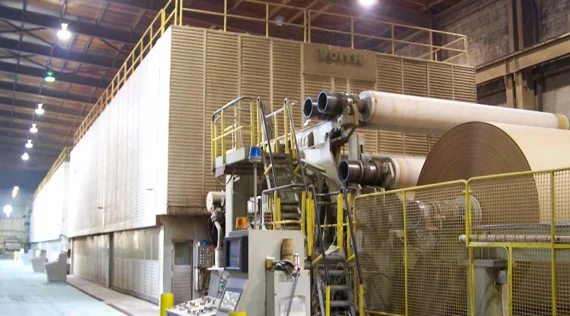Trash Trapping Program Rids Toronto, ON Harbour of 100,000+ Small Pieces of Plastic in 2024
Waste & Recycling | 2025-03-12 00:12:01
Materials collected are counted and characterized by U of T Trash Team researchers, informing solutions-based research and helping to combat plastic pollution in waterways.
SEATTLE (Waste Advantage): Between May and October 2024, a network of trash traps in the Toronto Harbour diverted more than 600-kg of anthropogenic (man-made) debris from the waters of Lake Ontario, including items such as plastic pellets, pieces of foam from food containers and construction activities, plastic bottle caps, cigarette butts, and more than 100,000 small pieces of plastic.
The Trash Trapping Program, led by PortsToronto and the University of Toronto Trash Team (U of T Trash Team) since 2019, and a cornerstone of the Toronto Inner Harbour Floatables Strategy, uses various methods and technologies such as WasteSharks, Seabins, LittaTraps, and manual skimming to capture and remove plastic pollution from the Lake Ontario. Materials collected are counted and characterized by U of T Trash Team researchers, informing solutions-based research and helping to combat plastic pollution in waterways.
Key Results and Findings in 2024
- Waste Diversion by Weight
- A total of 642 kg of waste was diverted from the environment.
- Waste Diversion by Numbers:
- Large items collected: 53,886
- Top 10 large items collected: Foam, cigarette butts, tobacco products (i.e. cigar tips), plastic bottle caps, large plastic fragments, food wrappers, large plastic film, straws and stirrers, plastic bags, plastic beverage bottles.
- Small items collected: 174,251
- Top small items collected: plastic fragments, foam, pellets, film, other.
- Tiny debris (including microplastics or items smaller than 5mm) remain the most common type of collected waste. Plastic breaks down into microplastics over time in the water, making it difficult to trace origins.
- Seabins: Five Seabins operated on the Toronto Waterfront and two at the Outer Harbour Marina. These Seabins trap floating debris in a catch bag that is emptied daily.
- WasteShark Aquadrones: These drones can remove up to 180 liters of marine litter per trip. In 2024, they collected 163 large pieces of debris (5.9 kg total) during 12 trips.
- LittaTraps: Ten LittaTraps were placed in storm drains near Queens Quay to prevent debris from reaching the harbour. They mainly captured cigarette butts, paper, and litter that could eventually break down into microplastics.
- Skimming for Litter: Manual skimming (scooping floatable litter) was conducted along the Toronto Inner Harbour to remove both large debris and invasive plants that accumulate microplastics.
2025 Trash Trapping Program Outlook
- The Trash Trapping Program operates between May and October each year. In May 2025, PortsToronto will work to install existing trash traps at locations on the Toronto Waterfront and at the Outer Harbour Marina, and the U of T Trash Team will be onboarding and training the 2025 research team.
- In addition to the existing fleet of seven Seabins and two WasteSharks (the Toronto Sharks, Ebb and Flow), PortsToronto is in the process of procuring new fixed trash trapping devices to be installed along the Toronto waterfront in spring 2025.
“It is exciting to see the continued success of the Trash Trapping Program and our enduring partnership with the U of T Trash Team, reflected in these annual results and data. Thanks to the dedication, hard work, and innovative spirit of our teams, PortsToronto and our partners have achieved remarkable progress since 2019 in keeping our waterways clean and contributing to important research. In 2025, we’re furthering this mission with the addition of three new devices to our fleet, joining our Seabins and WasteShark aquadrones in tackling floating debris and plastic pollution in the harbour. Together, we’re making a lasting impact on the future of the Toronto Harbour and Lake Ontario,” said RJ Steenstra, President and CEO, PortsToronto
Dr. Chelsea Rochman, Head of Operations at the U of T Trash Team commented, “It has been wonderful to work on this project for five solid years. As we’ve worked, our partnerships have grown, and so has our impact. Due to an increased capacity through more traps and more human power, we remove more and more plastic pollution from our waterfront every year. Moreover, the data we collect is used to inform the preventative solutions we work on together – such as reducing litter from cigarette butts, rethinking garbage bins to reduce overflow, and reducing single-use foodware and produce bags in local businesses. Holistically, the work we do trapping trash and preventing plastic pollution reduces the plastic pollution in Toronto’s water – protecting wildlife and humans.”
Courtesy: www.wasteadvantagemag.com
 By
By 